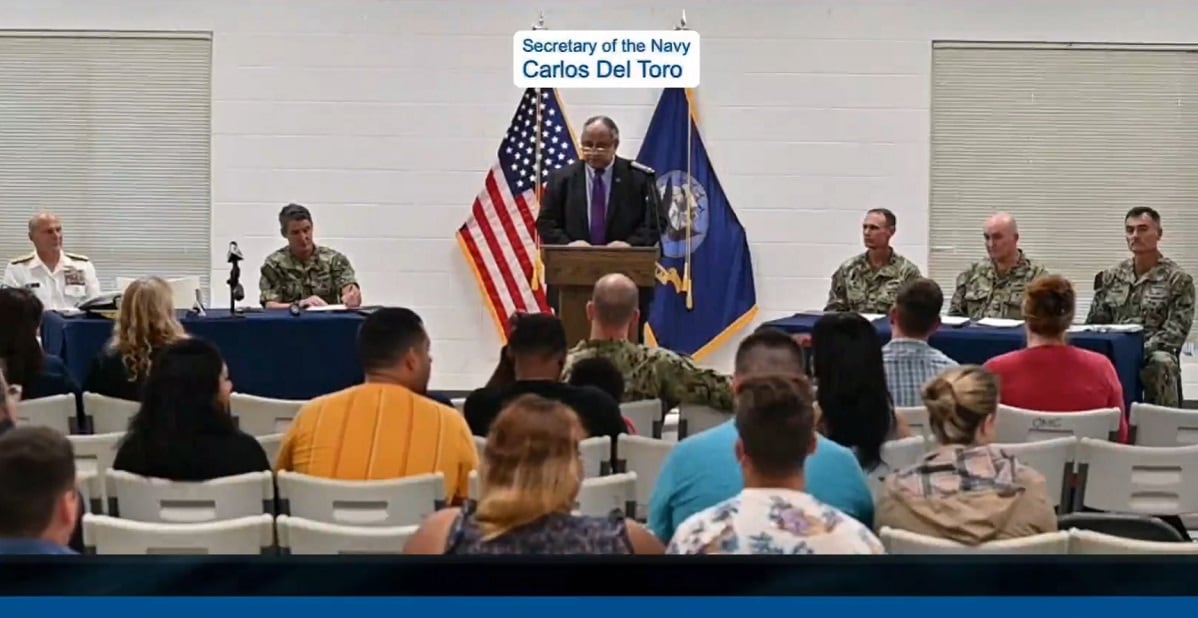HONOLULU — Officials with Hawaii’s Health Department testified Monday about past problems with a Navy fuel storage facility blamed for contaminating Pearl Harbor drinking water, including corroding steel tanks, behind-schedule maintenance and tanks that haven’t been inspected in more than 20 years.
The state issued an emergency order to stop running the underground tanks and remove the fuel after tests in recent weeks detected petroleum in the Navy’s tap water system. The Navy is contesting the order, which prompted an evidentiary hearing that started Monday and could continue Tuesday.
“Water is life,” Wade Hargrove, a deputy state attorney general, said in his opening statement. “This case should speak for itself.”
Thousands of families have been affected, including some who have been displaced from their military homes, said Dr. Diana Felton, state toxicologist. She said people have complained of abdominal pain, skin rashes, headaches and other ailments.
RELATED

Carly Lintner, whose husband is in the Army and lives in military housing, testified about how the family is showering at a hotel, but sleeping at home because the couple has a dog and a 16-month-old son.
She described how her son developed a rash and a Thanksgiving dinner made with Navy water with neighbors and friends led to everyone having a stomach ache that they initially thought was food poisoning.
Through tears, she shared how her normally thirsty dog refused to drink tap water and was vomiting. The dog now drinks bottled water, which Lintner also uses to wash her son’s bottles.
She said they have a reservation at the hotel until Christmas, but will have to find another hotel after that.
Fuel has so far only been detected in the Navy’s water system, which serves 93,000 people. Schools and businesses that receive water from the Navy have also been affected.
All branches of the military use fuel from the tanks, which were built underground into the side of a mountain ridge near Pearl Harbor in the early 1940s.
One of the aging tanks, by the Navy’s estimation, hasn’t been inspected in 40 years, testified Lene Ichinotsubo, acting chief of the state Health Department’s Solid and Hazardous Waste Branch.
Under questioning by Jon McKay, a lawyer representing the Navy, Ichinotsubo agreed that concrete bound to steel liners with pressurized grout protects against corrosion.
Navy officials believe a one-time spill of jet fuel inside an access tunnel on Nov. 20 contaminated one of its wells and the tap water. Officials said they don’t believe leaking fuel tanks tainted the water.
The Honolulu Board of Water Supply and Sierra Club of Hawaii are intervening in the hearing.
Honolulu’s water utility is concerned leaked fuel could taint its water supply and an aquifer that it shares with the Navy.
“The fuel there is really am imminent threat to the aquifer,” testified Erwin Kawata, program administrator for the Board of Water Supply.
When the utility learned of a 2014 leak, officials saw the large amount of fuel stored there as a threat to the groundwater aquifer, he said.
Kawata agreed that the utility hasn’t detected any petroleum in its wells, when asked by McKay.
The hearing got underway as Hawaii’s congressional delegation announced that the Department of Defense inspector general intends to investigate, at the request of the members of Congress.
Navy officials said they are flushing clean water through the overall water system and water systems in all homes. They said they hope to complete that process by Christmas.





